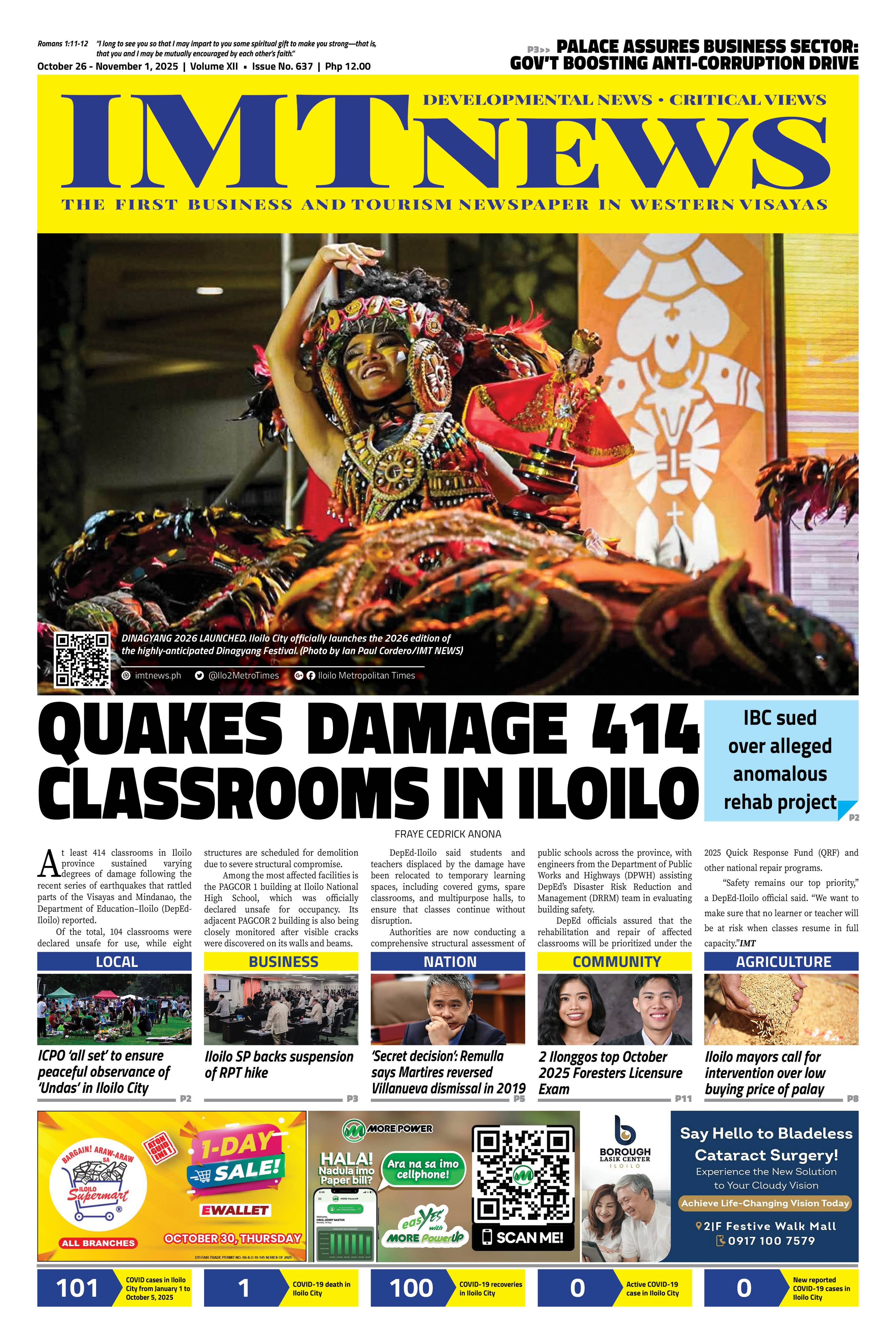Torrential rain, clogged drainage systems, and waterlogged soil have been cited as the main causes of widespread flooding in Iloilo City.
Darwin Joemil Papa, chief of the Disaster Response Division of the Iloilo City Disaster Risk Reduction and Management Office (CDRRMO), said, “The first and most critical factor was the volume of rainfall.”
“Our monitoring recorded 50 millimeters of rain in just one hour—an extreme downpour that overwhelmed the city’s flood management systems,” he noted.
But the rain itself, according to Papa, was only part of the problem.
He lamented that poorly maintained drainage systems, many of which were clogged with trash and debris, severely hampered the outflow of floodwaters.
“Water couldn’t pass through the city’s drains quickly enough,” Papa explained. “These blockages acted like dams, forcing the water to pool in streets and neighborhoods.”
The third factor was the oversaturation of soil, as days of continuous rain prior to the storm had already exhausted the ground’s capacity to absorb more water.
“Even if some areas didn’t experience flooding before, they did this time because the soil simply couldn’t absorb any more rain,” Papa said. “This led to runoff flowing directly into homes and roads.”
In total, 896 families or 3,116 individuals were affected across Iloilo City’s eight districts, based on official CDRRMO records. Some families had to evacuate or seek temporary shelter with relatives due to the rising water levels.
What made the situation worse, Papa said, was the false sense of security among residents.
According to him, many had returned to their homes thinking it was safe after Severe Tropical Storm Crising exited the Philippine Area of Responsibility (PAR) at 10 a.m. on Saturday, July 19.
However, the enhanced southwest monsoon (habagat) continued to bring torrential rains across Western Visayas even after the storm left, catching many people off guard.
“People thought the worst was over when Crising exited PAR. They didn’t expect the habagat to unleash such heavy rains,” Papa said.
In response, the city government quickly mobilized food assistance and relief operations. Emergency teams were sent to affected barangays to distribute rice packs, canned goods, bottled water, and other essentials.
“We acted fast to ensure families, especially those with children and senior citizens, had food and basic needs,” Papa said.
City officials said the recent flooding highlights the urgent need to improve drainage maintenance, waste management, and urban planning, especially in flood-prone areas.
“These floods were preventable,” Papa stressed. “If we want to protect our communities, we need to stay alert, prepare our infrastructure, and act ahead of time—not just react.”IMT







